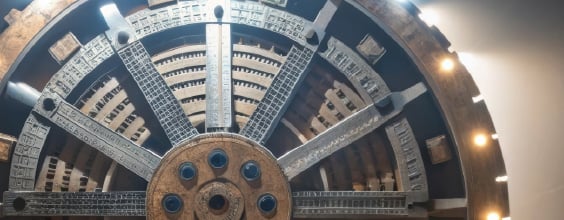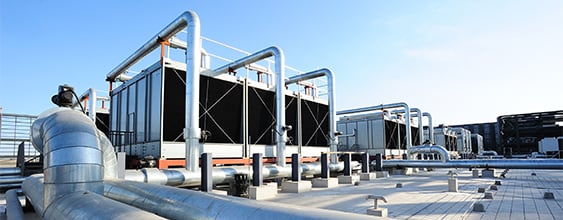Think of a toy building block set. Made in factories, the colourful little blocks fit together perfectly and are all that’s needed to build your structure. It’s a useful way of understanding Modern Methods of Construction (MMC) where components, large and small, are manufactured off-site, then transported to site for assembly.
Pathway to smarter, greener builds
Approaches like MMC can speed up builds by an order of magnitude and are a big win for the environment. Off-site construction emits less carbon than traditional on-site construction and reduces the amount of waste going to landfill.
That's no small benefit when you consider the amount of waste generated by construction and demolition. Every year, Auckland generates about 700,000 tonnes of construction and demolition waste, enough to fill over 100 Olympic-sized swimming pools. And 40 percent of all waste sent to Auckland landfills is from construction sites.
With MMC, shifting construction workers from commuting to site every day to working in a factory, which could be located anywhere, not only has logistical advantages; it offers an opportunity for social impact by strategically positioning factories in areas with high unemployment.
Shifting construction into the factory is one way we can build smarter, healthier, and greener – this in an industry that in 2023 added a whopping $19.5 billion to the nation's economy, making up seven percent of GDP.
With estimates suggesting that 20 percent of global carbon emissions relate to the construction of the built environment, the industry has a responsibility to shift to building in these kinds of ways.
MMC’s secret sauce
Planning is everything in MMC. This needs to happen right from the start of the project. The best MMC methodologies focus on optimising offsite construction - recognising that some on-site work, such as piles and foundations, will still be necessary. Additionally, factors such as transportation and logistics are considered in well-thought-out methodologies to prevent potential issues like sub-assemblies that can’t be transported or craned into position.
WSP UK has developed and trialled just such a method that lets clients, including contractors, navigate the complexities of MMC. It’s been used in places such as Pier 2 at Manchester Airport, Heathrow Airport, and projects in Saudi Arabia, Australia, and elsewhere in the UK.
MMC is inextricably linked with a process known as Design for Manufacture and Assembly (DfMA), which focuses on optimising the manufacturability and assembly process of a product. DfMA helps MMC by making sure building parts are designed to be put together quickly and easily in construction projects using modern methods.
Rather than designing components from scratch for each project, we’re seeing a shift towards creating standardised Kits of Parts - pre-designed elements that are ready to be manufactured in factories, eliminating the need for redesigning them for each project.
Kits of Parts can be reused across multiple design and construction projects. This reduces waste and promotes efficiency by aggregating components. In the housing sector, for example, where New Zealand is expected to need to consent over 37,000 dwellings per year until 2027, developers could collaborate to define standardised components and create a framework where multiple projects can use the same set of components. The same could be done in healthcare, education, and other sectors.
Overcoming inertia
While MMC is slowly becoming more accepted, industry inertia is holding things back. Significant challenges exist, including getting architects and industry veterans to change their mindset. Most are used to traditional, on-site building methods and can't (or won't) think like a manufacturer.
The technology and expertise to have MMC become the world’s construction method of choice exists, but the way most projects are currently funded doesn't align well with MMC, as it requires significant upfront investment - especially in factories which require a consistent flow of orders.
Another challenge is that clients sometimes struggle with the concept of MMC procurement. Many want to stick to traditional project-based procurement – not understanding that a replicable Kit of Parts or catalogue of prefabricated products is what drives MMC procurement.
Overcoming these challenges means shifting towards standardised production methods, better coordination, education, and scaling up MMC operations to make it a more viable construction option.
Aotearoa New Zealand playing catch-up
While modern methods of construction (MMC) are gaining traction globally, New Zealand is playing catch-up compared with other parts of the world.
Although some MMC projects have been undertaken here - such as the Scott Base redevelopment - their adoption hasn't been as extensive. However, there's growing interest and potential for MMC across various sectors, including infrastructure, education, healthcare, defence, and housing.
We don’t need to look too far afield for more inspiration and examples. A Manufacturing for Schools program has just been introduced in New South Wales, Australia - where cutting-edge construction techniques including digital technologies, off-site manufacturing and on-site assembly of prefabricated elements, are set to be used to deliver high quality school buildings faster and at a lower cost than with traditional construction methods.
Encouragingly, the government has shown interest in exploring MMC solutions to achieve cost savings, optimise construction processes, and support local suppliers. The Infrastructure Commission has suggested the use of modularisation and standard design, reflecting a recognition of the potential benefits of MMC and how New Zealand's construction industry can capitalise on its advantages. MMC Kits of Parts could, for example, be used to respond to urgent housing crises or in the aftermath of natural disasters.
MMC a must-do
Given the expected future demand for housing and infrastructure, MMC isn’t just a nice-to-do; it's a must-do. Coupled with materials recycling / reuse and increasing market access to lower carbon products, building in this way is plain common sense.
MMC represents the next frontier of innovation in the building industry, akin to the transformative period at the end of the 19th century. Just as that era saw the invention of essential elements like lifts, toilets, drywall, lighting, and steel frames, we’re on the cusp of a similarly disruptive phase today.
Consider iconic structures like the Empire State Building, which showcased the potential for rapid construction. Despite technological advancements over the past century, construction productivity has remained stagnant, prompting a call to shift more work to factories and away from traditional onsite methods.
By leveraging technologies such as Internet of Things, cloud computing, and smart factories, the construction sector can (and should) use MMC for significant environmental and productivity gains - driving us into a new era of efficiency and innovation.














